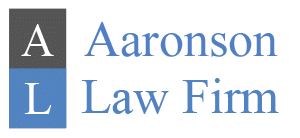It’s difficult, at best, to quantify human vice. Though some have endeavored to cite facts and figures such as administrative statistics, criminal and legal statistics, and population surveys,[1] ultimately these numbers are less than satisfactory for reasons discussed. Our thesis is that corruption is most easily quantified as a measure of financial influence over administrative and legal authorities relative to the overall amount of money generated by a given company, sector, or industry.
Though some of this influence is hidden, in that it involves clandestine payments – bribes – much of it is known in the form of political contributions and lobbying efforts. Though these measures aren’t technically ‘corrupt’ in that they involve lawfully disclosed contributions, it is still a reasonable inference that they relate directly to the degree of influence required for a given company or industry to avoid retribution for questionable conduct.
Subjectively, although questionable conduct appears to be pervasive in the timeshare sector of the hospitality industry, we’ve observed very little retribution in the form of enhanced regulation, attorney general prosecutions, successful civil lawsuits, or any other measure. Thus, we seek here to quantify the amount of financial influence attributable to timeshare developers as a function of the total amount of revenues generated by the industry at large. As with any method, this will have its shortcomings. But because these figures can be compared to those of other industries known, at least subjectively, to be relatively free of graft, one can hope to draw meaningful inferences on an apples-to-apples basis.
Perhaps the most intuitive way to test this proposition involves an actual example not necessarily involving timeshares. For example, at the extremes, it is intuitive to surmise that there is more misconduct to cover for in gambling and casinos relative to, say, something relatively vice-free, such as the dairy industry. In between, there exists a continuum of sorts, when evaluating the data, measuring dollars spent influencing regulators compared to the overall amount of money at stake.
Running the numbers, during 2020, the dairy industry generated $40.4 billion in revenue.[2] By contrast, dairy industry concerns collectively reported only $300,060 in federal PAC contributions for the calendar year 2020.[3]
The casino and gaming industry, by contrast, generated less revenue than dairy –
$29,981,680,[4] during 2020, while contributing $112,380,882 to political action committees at the federal level.[5]
Endeavoring to quantify this, where contributions, C, relative to total revenues, R, gives the corruption quotient, CQ:
C/R = CQ
For Dairy, CQ = .0000075%
For Casino/Gaming, CQ = .0374%
Thus, the difference involves four orders of magnitude.
As to timeshares, the American Resort Development Association, ARDA, is a consortium of timeshare developers largely responsible for public relations, lobbying, and general influence. According to ARDA, the timeshare sector of the hospitality industry generated about 4.9 billion in revenue during 2020.[6],[7]
The public records of the FEC show that, during the first six months of 2021, ARDA contributed $1.17 million to peddle influence at the federal level.[8] Extrapolating that to an annualized figure gives $2,234,000 for 2021. What’s worse, the ‘contributions’, to an extent, were illegally diverted from the pockets of timeshare owners, who involuntarily, and unwittingly contribute a portion of their annual dues toward these amounts.[9] ARDA is believed to misappropriate over five million annually in this fashion.[10]
Thus, calculating the CQ for ARDA alone, using solely FEC figures,[11] and apart from any irregularities cited pertaining to the source of these contributions:
CQ = 2.234/4900 (million) = .00046
This represents a value roughly two orders of magnitude worse than the dairy industry, but not as bad as that of the casino industry. This study is cursory in nature and intended to invite feedback and refinement in its methodology and exhaustiveness.
[1] https://www.u4.no/publications/guide-to-using-corruption-measurements-and-analysis-tools-for-development-programming
[2] https://www.statista.com/statistics/196420/us-farm-income-from-dairy-products-since-2001/#:~:text=This%20statistic%20shows%20the%20income,around%2040.5%20billion%20U.S.%20dollars.
[3] https://www.opensecrets.org/outsidespending/summ.php?disp=I
[4] https://www.statista.com/statistics/187926/gross-gaming-revenue-by-state-us/
[5] https://www.opensecrets.org/outsidespending/summ.php?disp=I
[6] https://www.hvs.com/article/9121-the-timeshare-industrys-road-to-recovery
[7] https://www.statista.com/statistics/187926/gross-gaming-revenue-by-state-us/
[8] https://www.fec.gov/data/committee/C00358663/
[9] https://www.sun-sentinel.com/business/fl-xpm-2010-08-09-fl-timeshare-industry-fine-20100809-story.html
[10] https://www.redweek.com/resources/ask-redweek/arda-roc-donation-in-maintenance-bill
[11] Exclusive of state lobbying and PAC contributions
